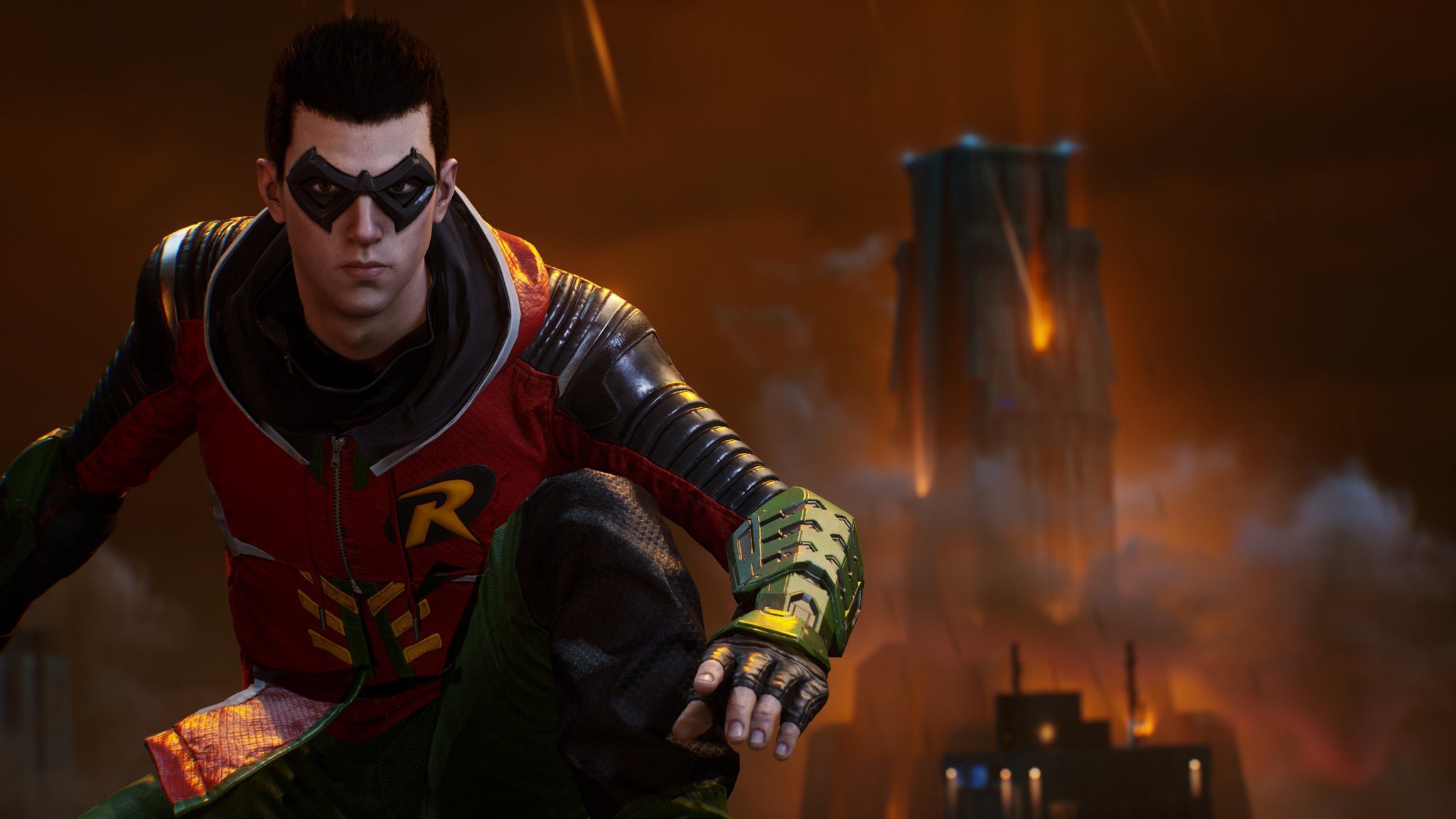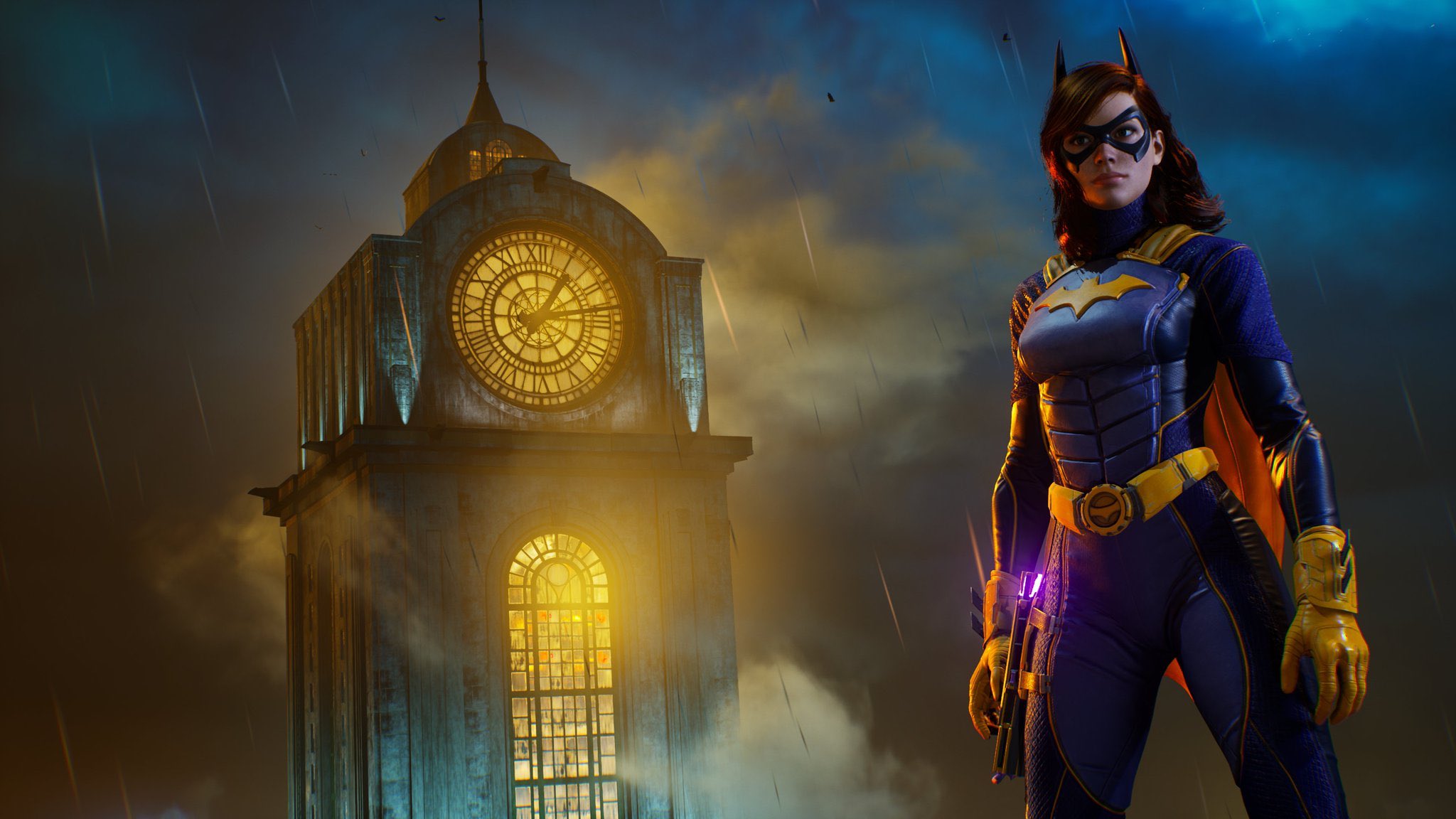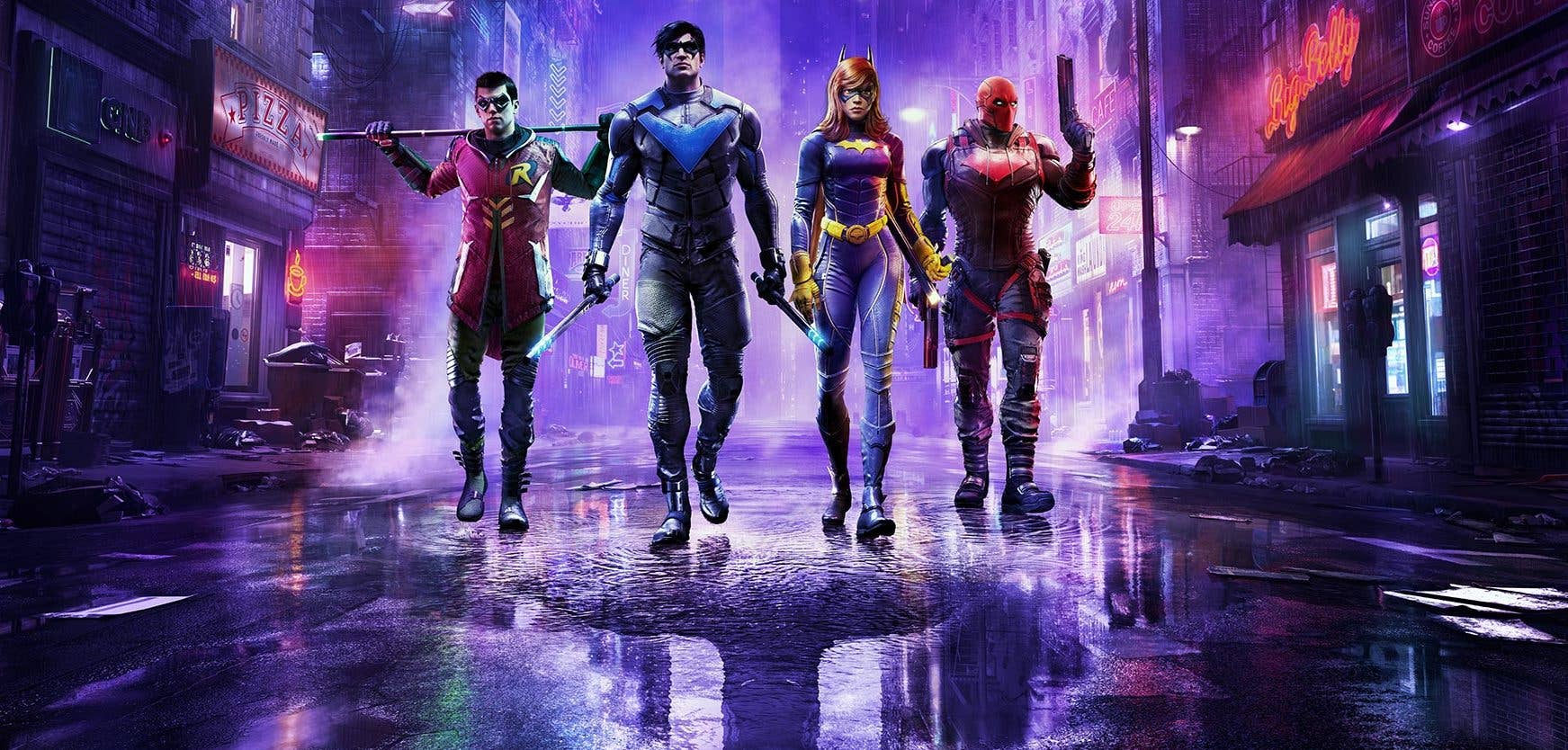
The new Batman video game Gotham Knights suffers in comparison to its Arkham predecessors.
That is not, strictly speaking, a fair criticism; the studio has made it clear that “Gotham Knights is an all-new, original story and experience set in DC’s Batman Universe. It is not connected to the Batman: Arkham games.” But the comparison is inevitable. The developer, WB Games Montreal, also developed Arkham Origins, the third game in the Arkham series. The playstyle, at least on its surface, is Arkham-esque, and emphasizes stealth, third-person melee combat, and detective work.
Arkham Knight ends with Batman’s apparent demise. In Gotham Knights, both Commissioner Gordon and Batman are dead, and it’s up to the Bat-Family—Nightwing (Dick Grayson), Red Hood (Jason Todd), Robin (Tim Drake), and Batgirl (Barbara Gordon) to carry on The Bat’s legacy and emerge as Gotham City’s young protectors. You have a “Belfry” hub where you can switch between them, learn new abilities, and upgrade your gear. And when you upgrade one of them, the others acquire the same experience and commensurate gear. You’ll never be in a late-game situation where you’re railroaded into choosing one over the other. The game encourages experimentation.
You will inevitably have favorites. Robin has a bo and favors stealth; he’s the closest to what we traditionally accept as Batman. Batgirl has tonfas and tech chops; she can disable cameras and booby-trap electric panels. Red Hood has guns, and he’s a head-on brawler; you have to get in close to throw and pummel your opponents. Nightwing has escrima sticks, and he’s sort of like choosing Mario in Mario Kart; he does everything serviceably, but nothing to mastery.
I found myself choosing Robin the most (often switching to Red Hood for variety), and Nightwing the least. There was, in my mind, an obvious pecking order. Ideally, the four characters would represent different playstyles, strengths, and weaknesses; they would fundamentally change how the game is played, and necessitate repeat playthroughs to appreciate their subtleties. But in practice, it felt like two of the characters were fully realized, and the other two were sketches, and not fleshed out to the extent they needed to be.
It reminded me, in a negative way, of 2020’s Marvel’s Avengers game. That game sold itself on the premise that every added superhero would affect how you approached and played the game. But some characters were clearly better defined than others. And because they all needed to traverse the same landscape and obstacles, it had a narrowing effect on how different the characters could ultimately be. The variety existed, but within strictly defined limits.
View this video on YouTube
There is a rhetorical trap where a writer criticizes the game he wishes he had, rather than the game he was given. But in this case, it feels applicable. I kept imagining what it would be like to make a vicious brawler with computer hacking skills. Or a stealth fighter with long-distance ability. Ideally, I’d have four deeply realized characters, with many facets to their gameplay. But if I had to choose, I’d rather develop a unique, purposeful single character, than play as four characters that are treated in outline.
It would be nice, in other words, to have a Batman.
The game does not engage in handholding, which, depending on your familiarity with action RPG games, could be frustrating. Gotham Knights does have opening “tutorial levels,” where you learn to punch, counter, and use your “Momentum” abilities—powerful moves that you earn by countering and dealing damage. But as the game progresses, a lot of its more advanced mechanics, such as crafting and the use of weapons mods, are taught via blocks of text or menu prompts. You have a number for “Power” on your suit, melee weapon, and ranged weapon. What is “Power”? How does this present itself in gameplay? What significance does the number have, relative to the other statistics?


View this video on YouTube
Hours into my playthrough, the game is much more fun than when I started. The Batcycle is extremely well implemented. It’s a joy to ride, and your surroundings blur to give you this beautiful illusion of speed. The graphics are moody and stunning. I finally have a handle on the menus, minutiae, and mechanics, so I can enjoy the deep-state plot that revolves around the Court of Owls and the League of Assassins. I’ve adjusted to the controls and can now move my character smoothly, though the combat is never as fluid and free-flowing as Arkham’s; it feels slower and more methodical. You never achieve mastery and dominance over your environment. But at least that’s narratively consistent; these characters are young and not as polished as their mentor.
And it bears repeating: this is not an Arkham game. Know that from the outset, and lower your expectations. This game does not implement any of its common components as skillfully as those games once did. It’s not Arkham City, but then again, very few things are. At worst, Gotham Knights will be a victim of its outsized hype. But there is a bit to enjoy and appreciate.
Gotham Knights is out for Xbox Series X/S, PlayStation 5, and PC on Friday, Oct.21.



